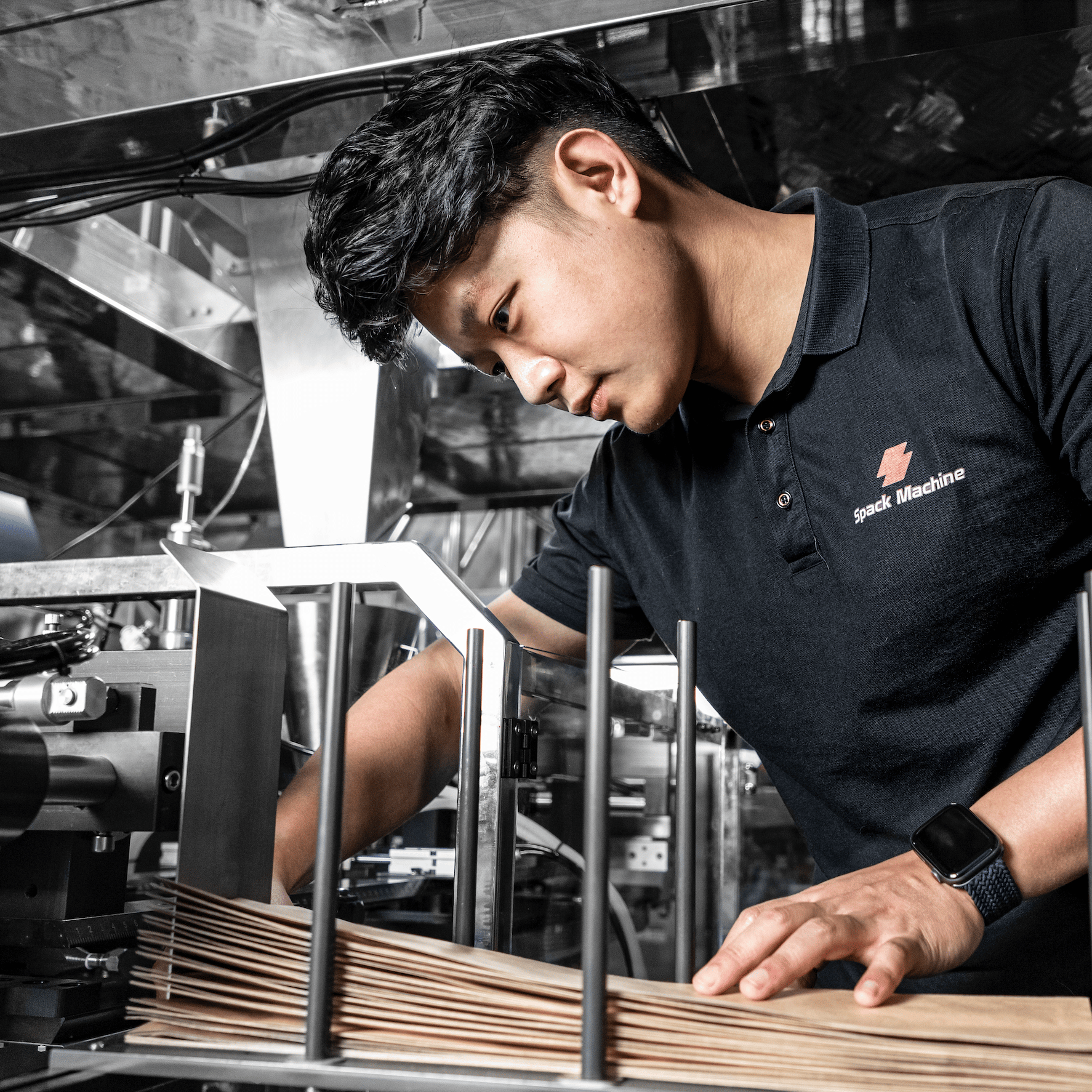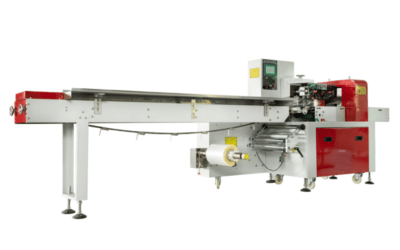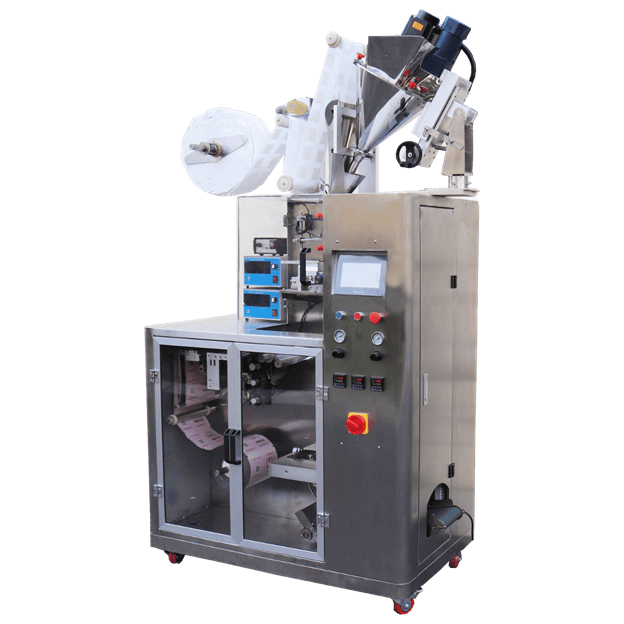Introdução
Automatic capsule filling machines are sophisticated devices used in the pharmaceutical industry to efficiently fill large quantities of capsules with powders, pellets, or other substances. Much like how a baker might use a piping bag to quickly fill a tray of cupcakes with icing, these machines rapidly orient, open, fill, and close capsules of various sizes, producing hundreds or even thousands of accurately dosed capsules per minute.
Understanding Automatic Capsule Filling Machines
Automatic capsule filling machines are like high-tech assembly lines for making medicine capsules. Imagine a factory where robots handle every step of the process, from picking up empty capsules to filling them with precise amounts of medicine, and then sealing them shut. These machines can fill hundreds or even thousands of capsules per minute, making them incredibly efficient for large-scale production.

How Do They Work?
O process starts with the machine orienting and separating the empty capsules. Think of it like sorting a deck of cards so that all the cards are facing the same way. Once the capsules are properly aligned, the machine uses a vacuum system to separate the capsule bodies from the caps, preparing them for filling.
Next, the machine fills the capsule bodies with the desired substance, which could be powder, pellets, or granules. This step is similar to using a measuring spoon to scoop the exact amount of flour needed for a recipe. Advanced tamping systems ensure that the powder is packed tightly and evenly, preventing any spillage and ensuring each capsule has the correct dosage.
After filling, the machine reattaches the caps to the bodies, sealing the capsules. This is like putting a lid on a jar to keep its contents secure. The filled capsules are then ejected from the machine, ready for packaging and distribution.
Key Features
These machines are designed to be user-friendly, with touch screen controls and easy-to-clean parts. They also feature sensors that monitor the process, alerting operators to any issues, much like a car’s dashboard warning lights. This ensures smooth operation and minimal downtime, making the production process both efficient and reliable.

Benefits of Automatic Capsule Fillers
Automatic capsule filling machines are essential in the pharmaceutical industry, helping to produce consistent, high-quality capsules quickly and accurately. They are like the unsung heroes behind the scenes, ensuring that every capsule you take is filled with the right amount of medicine, every time.
Eficiência
Automatic capsule filling machines can produce hundreds or thousands of capsules per minute, making them incredibly efficient for large-scale production. This speed helps pharmaceutical companies meet high demand without compromising qualidade.
Exatidão
These machines ensure each capsule contains the exact dosage required. Advanced tamping systems pack the powder tightly and evenly, guaranteeing consistency and reducing the risk of human error.
Safety and Hygiene
Designed to maintain high hygiene standards, these machines feature easy-to-clean parts and advanced monitoring systems to prevent contamination. This is crucial in the indústria farmacêutica, where product safety is paramount.
Cost-Effectiveness
While the initial investment in an automatic capsule máquina de enchimento can be high, the long-term benefits, such as reduced labor costs and increased production efficiency, make it a worthwhile investment.
Personal Insights
Choosing the Right Machine
From my experience in the industry, selecting the right automatic capsule filling machine depends on your production needs and budget. Consider factors like production speed, capsule size compatibility, and the type of substances you need to fill. For example, if you’re handling delicate substances or require precise dosing, investing in a machine with advanced tamping systems and real-time monitoring might be beneficial.
Maintenance Tips
Regular maintenance is crucial to ensure the longevity and efficiency of your machine. Clean the machine thoroughly after each use and perform routine checks on all components. Additionally, having a dedicated maintenance schedule and trained personnel can prevent unexpected downtimes and extend the machine’s lifespan.
Trends to Watch
The industry is moving towards more automated and intelligent systems. Keep an eye on innovations like IoT integration and real-time monitoring systems that can further enhance efficiency and accuracy. These advancements allow for predictive maintenance and real-time adjustments, ensuring optimal performance.

Advanced Tamping Systems
Advanced tamping systems are like high-tech gardeners for railway tracks, ensuring the stones (ballast) under the tracks are perfectly packed and aligned. These systems use sophisticated tecnologia para manter the tracks stable and safe, much like how a gardener uses various tools to maintain a well-kept garden.
The core of these systems is the tamping units, which are like the gardener’s hands. These units have pick-shaped tines that vibrate at high frequencies to pack the ballast tightly under the railroad ties. This vibration helps to squeeze and level the stones, ensuring the tracks stay in place and don’t shift under the weight of passing trains.
Modern tamping machines are equipped with advanced sensors and measurement systems, similar to how a gardener might use a ruler and level to ensure everything is perfectly aligned. These sensors use lasers and optical technology to measure the track’s geometry, including its alignment, level, and profile. This data is continuously fed to onboard computers, which adjust the tamping process in real-time to achieve the best results.
The operating control systems in these machines are like the gardener’s plan, guiding every action. These systems include touchscreen displays and control panels that allow operators to program optimal tamping patterns and monitor key metrics. Some machines even allow remote operation, reducing the need for constant manual intervention.
Stabilizing technology in tamping machines ensures that once the ballast is packed, it stays that way, much like how a gardener might use stakes to support young plants. This technology helps maintain the track’s alignment and stability over time, reducing the need for frequent maintenance.
Overall, advanced tamping systems are essential for maintaining safe and efficient railway tracks. They automate a labor-intensive process, ensuring that tracks remain perfectly aligned and stable, much like a well-maintained garden that thrives with the right care and tools.
Variable Frequency Drive Control
A Variable Frequency Drive (VFD) is like a dimmer switch for electric motors, allowing precise control over their speed and torque by adjusting the frequency and voltage of the power supply. This control is essential for optimizing performance and energy efficiency in various applications, from fans and pumps to complex industrial machinery.
VFDs operate using three main components: a rectifier, a capacitor, and an inverter. The rectifier converts AC power to DC, the capacitor smooths out the DC power, and the inverter converts it back to AC with variable frequency and voltage. This process is akin to converting a steady stream of water into a controlled spray, adjusting the flow to meet specific needs.
There are several control methods for VFDs, each suited to different applications:
- Volts-per-Hertz (V/Hz) Control: This method maintains a constant ratio of voltage to frequency, ensuring the motor operates efficiently across a range of speeds. It’s like adjusting the volume on a radio to keep the sound clear at different levels. V/Hz control is simple and cost-effective but less precise for high-performance applications.
- Vector Control: This method provides more precise control by adjusting the motor’s voltage magnitude, angle, and frequency to control its magnetic flux and torque. It’s similar to a GPS system that constantly adjusts your route for the most efficient path. Vector control is ideal for applications requiring dynamic speed regulation and precise positioning.
- Direct Torque Control (DTC): DTC offers the highest level of precision by directly controlling the motor’s torque and magnetic flux without the need for a feedback loop. It’s like having a skilled driver who can instantly respond to changes in road conditions. DTC is used in applications demanding rapid response and high accuracy.
The most common technique for controlling VFDs is Pulse Width Modulation (PWM). PWM varies the width of the pulses in the power supply to simulate a variable frequency and voltage, much like how a strobe light can create the illusion of continuous motion by flashing at different rates. This method ensures smooth and efficient motor operation.
Using a VFD can significantly reduce energy consumption by matching the motor speed to the actual load requirements, much like how cruise control in a car maintains optimal speed for fuel efficiency. This not only saves energy but also reduces wear and tear on the motor, extending its lifespan.
In summary, VFDs are versatile tools that enhance the performance and efficiency of electric motors by providing precise control over their speed and torque. Whether for simple applications like fans and pumps or complex industrial machinery, VFDs offer a range of control methods to meet various needs, ensuring optimal operation and energy savings.

High Containment Solutions for Potent Drugs
Handling highly potent active pharmaceutical ingredients (HPAPIs) is like dealing with a powerful but dangerous spice in a kitchen. Just as a tiny amount of a potent spice can flavor an entire dish, a small quantity of HPAPIs can be very effective in treating diseases. However, because of their potency, they require special handling to protect workers and prevent contamination.
High containment solutions are essential to safely manage these powerful substances. Imagine a chef working with a very spicy ingredient; they would need to wear gloves and use special tools to avoid getting burned. Similarly, in pharmaceutical manufacturing, high containment systems are used to protect workers from exposure to HPAPIs and to prevent cross-contamination of products.
One key aspect of high containment is the use of specialized equipment that operates under negative pressure, much like a vacuum cleaner that sucks in dust to keep the air clean. This equipment includes enclosed reactors, centrifuges, and dryers, which ensure that no airborne particles escape into the environment. Additionally, facilities are designed with controlled access areas, airlocks, and single-pass HVAC systems to maintain a clean and safe working environment.
Another important concept is the Occupational Exposure Limit (OEL), which sets the maximum amount of a substance that workers can be exposed to without adverse health effects. Think of it as a speed limit on a road; staying within the limit keeps everyone safe. The lower the OEL, the more potent the substance, and the stricter the containment measures need to be.
To further ensure safety, companies use Occupational Exposure Bands (OEBs) to categorize chemicals based on their toxicity and the health risks they pose. This is similar to how food is labeled with different levels of spiciness, helping chefs know how to handle each ingredient safely.
Advanced containment solutions also include the use of split butterfly valves, which act like airtight doors that prevent any leaks when transferring potent substances between different parts of the processo de fabrico. These valves can be made from stainless steel or lighter, semi-disposable polymers, making them easier to handle and clean.
In summary, high containment solutions for potent drugs involve a combination of specialized equipment, facility design, and strict safety protocols to protect workers and ensure product quality. These measures are crucial for safely handling HPAPIs, much like how a chef uses special tools and techniques to safely work with very spicy ingredients.

Precision Dosing Mechanisms
Precision dosing mechanisms are like custom-tailored suits for medication, ensuring that each patient gets the perfect fit for their treatment. This approach takes into account individual differences in genetics, metabolism, and other factors to determine the optimal drug dosage for each person.
One key element in precision dosing is the use of genetic biomarkers. These are like genetic fingerprints that reveal how a person’s body will respond to a particular drug. For example, certain genetic variants can affect how quickly a drug is metabolized, which in turn influences the appropriate dosage. Identifying these genetic markers helps doctors tailor the drug regimen to the patient’s unique genetic makeup, much like a tailor adjusts a suit to fit perfectly.
Another important aspect is the development of clinical decision support tools. These tools are like advanced calculators that use patient data to predict the best dosage. They incorporate information from genetic, phenotypic, and other biomarkers to create a personalized dosing plan. This ensures that the medication is both effective and safe, minimizing the risk of side effects.
Therapeutic drug monitoring (TDM) is another strategy used in precision dosing. TDM is akin to a GPS system that provides real-time feedback on a patient’s drug levels. By regularly measuring the concentration of the drug in the blood, doctors can adjust the dosage to keep it within a target range, ensuring optimal therapeutic effects while avoiding toxicity.
Precision dosing also involves the use of advanced pharmacokinetic (PK) and pharmacodynamic (PD) models. These models are like blueprints that map out how a drug moves through and affects the body. By understanding these processes, doctors can predict how different doses will impact the patient, allowing for more accurate and individualized dosing.
Incorporating precision dosing into clinical practice requires collaboration among various stakeholders, including academic institutions, healthcare organizations, and the pharmaceutical industry. These groups work together to validate and implement precision dosing tools, ensuring they are effective and widely accessible.
Overall, precision dosing mechanisms represent a significant advancement in personalized medicine, offering the potential to improve treatment outcomes by tailoring drug regimens to the unique needs of each patient.

Real-Time Monitoring Systems
Real-time monitoring systems are like having a live news feed for your business operations, providing continuous updates on the status of various systems and processes. These systems collect and analyze data as it happens, allowing for immediate detection of issues and quick decision-making.
Imagine you are managing a busy restaurant. Real-time monitoring is like having a set of cameras and sensors that constantly check the kitchen, dining area, and storage rooms. If the temperature in the fridge rises above a safe level, an alert is sent immediately, just like a chef noticing a problem and fixing it on the spot. This ensures that food stays fresh and safe to eat.
In the world of IT, real-time monitoring works similarly. It continuously tracks data from servers, networks, and applications, much like a security guard patrolling a building. If a server starts to overheat or a network slows down, the system sends an alert to the IT team, allowing them to address the issue before it affects users.
These systems use various technologies, such as sensors and IoT devices, to gather data. Think of these as the eyes and ears of the monitoring system, constantly watching and listening for any signs of trouble. The data collected is then analyzed using advanced tools, like machine learning algorithms, to identify patterns and predict potential problems.
One of the key features of real-time monitoring is the ability to set up alerts and notifications. For example, in a hospital, if a patient’s vital signs drop below a certain threshold, an alert is sent to the medical staff immediately, allowing for quick intervention. This is similar to how a smoke detector alerts you to a fire, giving you time to act before the situation worsens.
Real-time monitoring also provides historical data, which is like keeping a diary of past events. This helps in understanding trends and making informed decisions. For instance, a factory can use this data to identify when machines are most likely to fail and schedule maintenance accordingly, much like a car owner keeping track of oil changes to prevent engine problems.
Overall, real-time monitoring systems are essential tools for maintaining the smooth operation of various industries. They provide a constant stream of data, enabling quick responses to issues and helping to prevent problems before they escalate, much like having a vigilant watchman who never sleeps.
Wrapping It Up
In summary, automatic capsule filling máquinas are like high-tech baking equipment that quickly and accurately fill large batches of capsules with precise amounts of medicine, much like a pastry chef expertly piping frosting into rows of cupcakes. With advanced features like tamping systems to pack the powder down, adjustable speed controls to maintain the perfect filling pace, and sensors to ensure each capsule meets quality standards, these machines make the capsule manufacturing process faster, easier, and more reliable. By automating the filling process and reducing the risk of human error, automatic capsule fillers help pharmaceutical companies produce consistent, safe, and effective capsule medications to help people live healthier lives.
Common Questions Answered
What is an automatic capsule filling machine?
An automatic capsule filling machine is a device used to fill empty capsules with medicine or other substances quickly and accurately. It’s like a high-tech kitchen gadget that can fill hundreds or thousands of capsules per minute, ensuring each one has the right amount of powder or pellets inside.
How does an automatic capsule filling machine work?
O machine works by first orienting and separating empty capsules. Then, it fills the capsule bodies with the desired substance using a precise dosing system. Finally, it reattaches the capsule caps and ejects the filled capsules, ready for packaging.
What types of capsules can be filled?
These machines can fill various sizes of hard gelatin capsules, typically ranging from size 000 to size 5, with powders, pellets, or granules.
What are the benefits of using an automatic capsule filling machine?
Using an automatic capsule filling machine increases production speed, ensures accurate dosing, reduces labor costs, and maintains high hygiene standards. It’s like having a robot that can make perfect capsules every time, much faster and more reliably than manual methods.
Are these machines easy to operate and maintain?
Yes, most automatic capsule filling machines are designed to be user-friendly with touch screen controls and easy-to-clean parts. They also have sensors to monitor the process and alert operators to any issues, making them efficient and straightforward to maintain.







0 Comentários